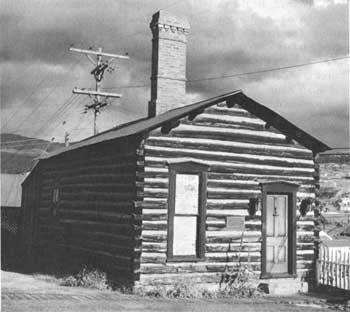






Survey of Historic Sites and Buildings
 |
LEADVILLE Colorado |
 |
| ||
Ownership and Administration. Various private owners, and the State of Colorado.
Significance. After the discovery of gold placers near the site of Leadville in the late 1860's, a short-lived boom ensued. Then in the 1870's prospectors made a series of incredibly rich silver strikes along California Gulch. Almost overnight the desolate pine flat just below the timberline sprouted into a rugged mining camp that came to be known as Leadville. The town consisted of the usual assortment of pine-bough shelters, tent hotels, banks, grocery stores, saloons, and mine dumps. In 1879 the population was 20,000 people, most of whom were proud of the town's "wide open" reputation—enhanced by a hundred licensed saloons and a dozen gambling houses that operated around the clock. In the late 1890's, below the silver-bearing strata, miners ran across quartz veins heavily seamed with gold. Thus, despite the Panic of 1893 and the end of the silver boom, Leadville prospered. Since the turn of the century, lead, zinc, manganese, and molybdenum have been mined in the district.
 |
| The Dexter Cabin in Leadville, Colorado, is an ordinary two-room miner's cabin. Built in 1879 of square-hewed logs, it is now a State museum. |
Present Appearance. Still an active town, Leadville contains a number of historic structures that commemorate its once tempestuous life. Outstanding among these are the Vendome Hotel, the Elks Opera House, the Old Pioneer Bar, Healy House, the Dexter Cabin, St. George's Episcopal Church, and the Tabor House. The Healy House and Dexter Cabin are administered by the State. [14]
NHL Designation: 07/04/61
 |
 |
http://www.cr.nps.gov/history/online_books/prospector-cowhand-sodbuster/sitec7.htm
Last Updated: 22-May-2005